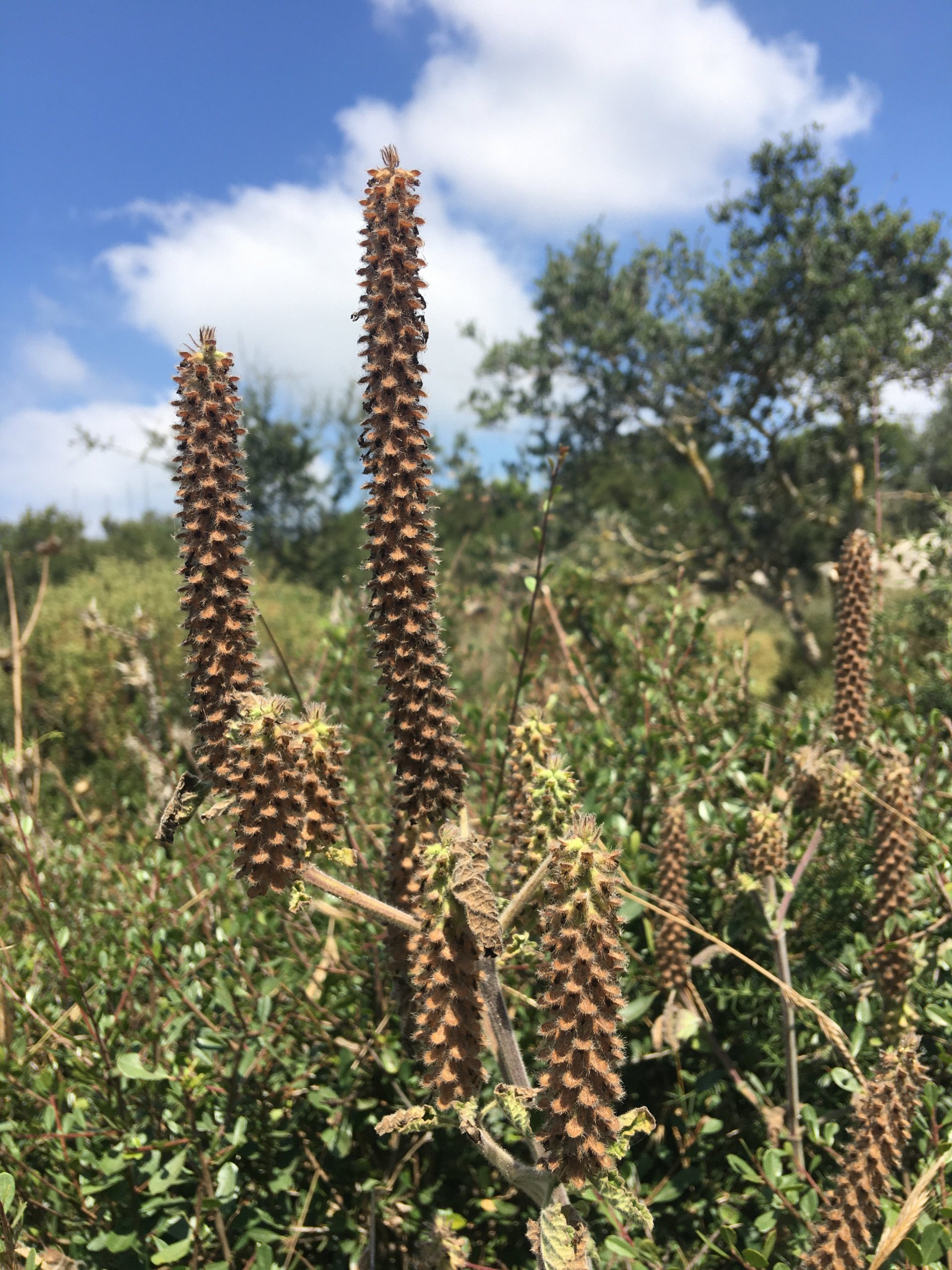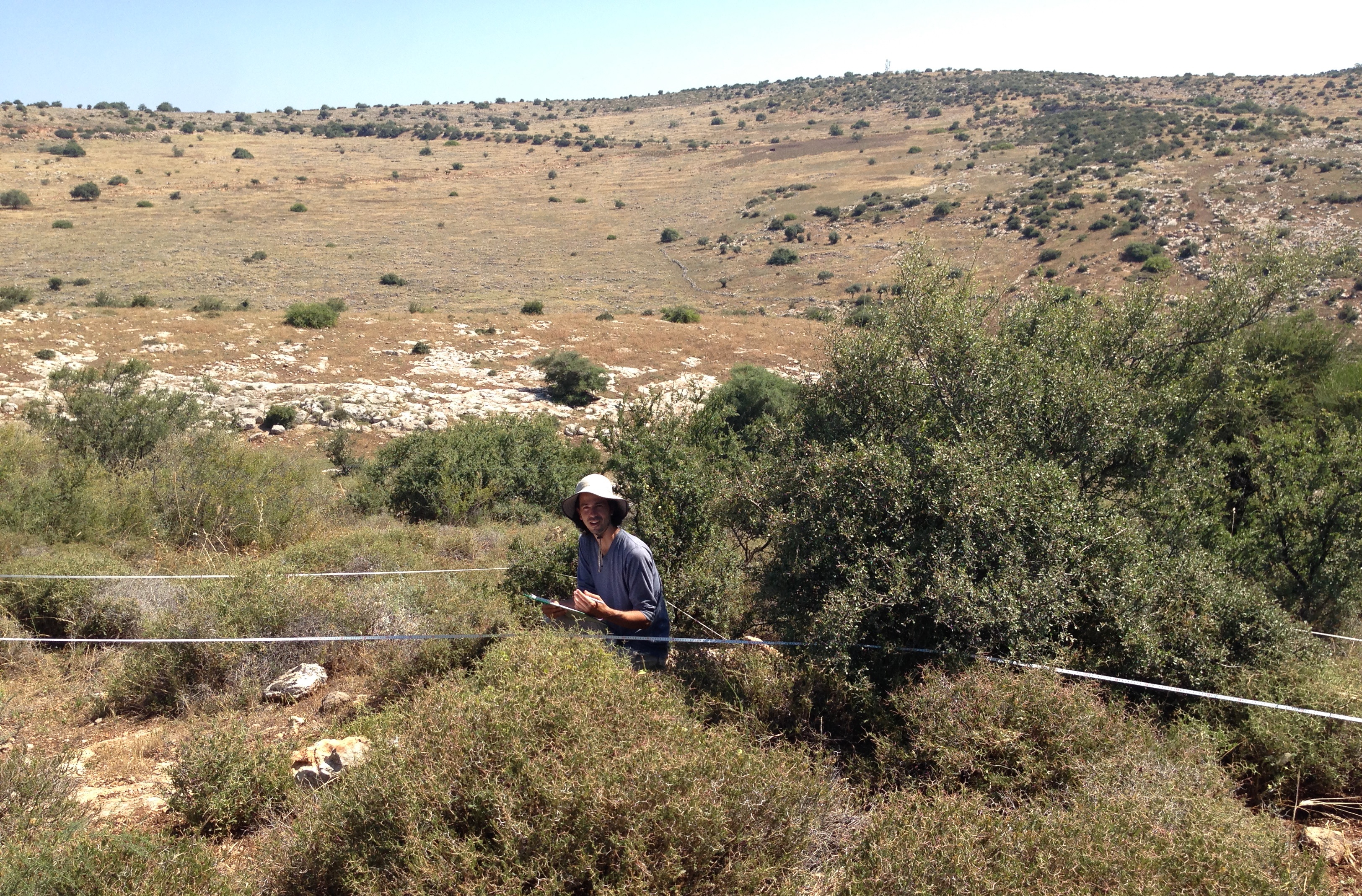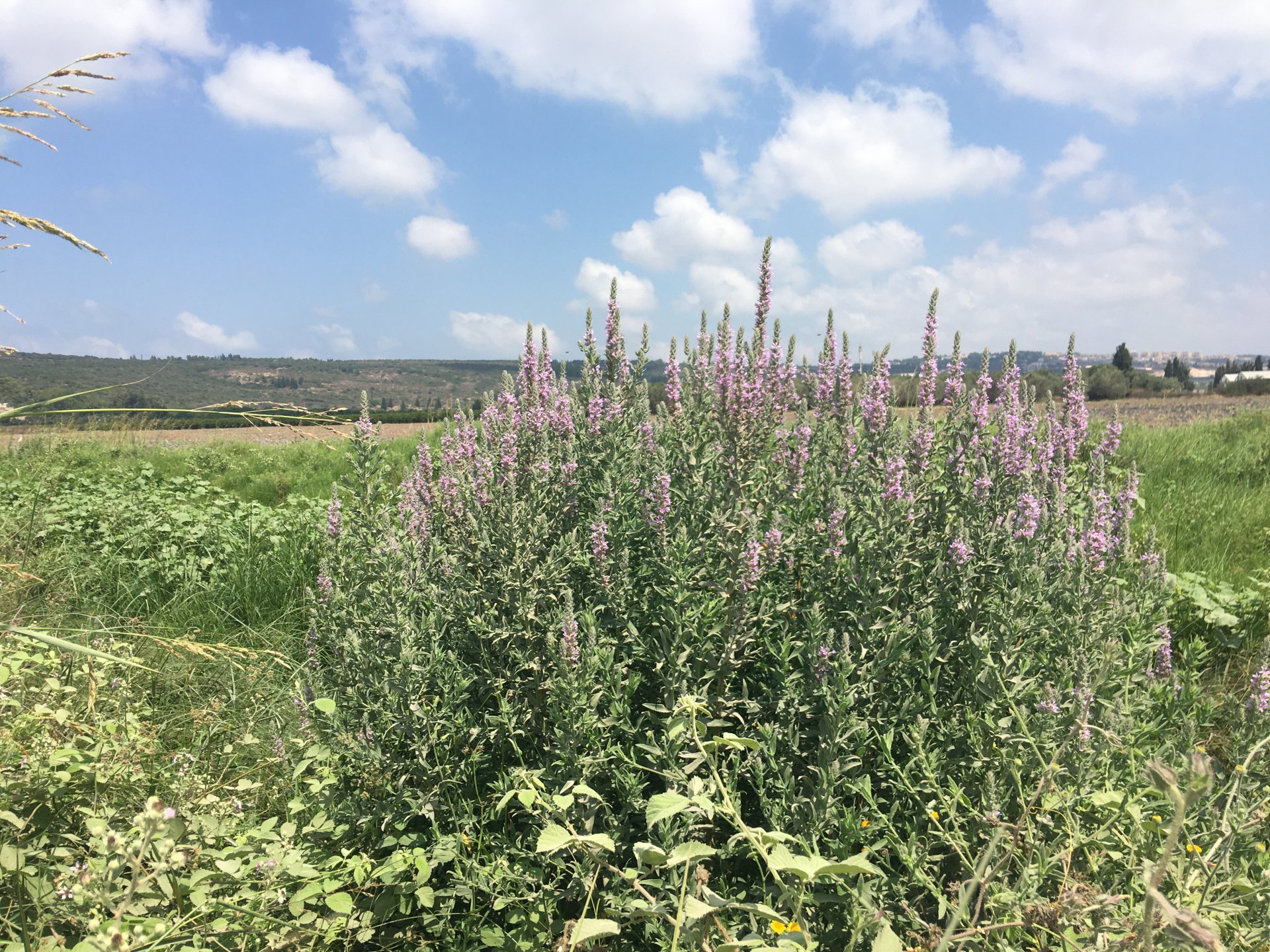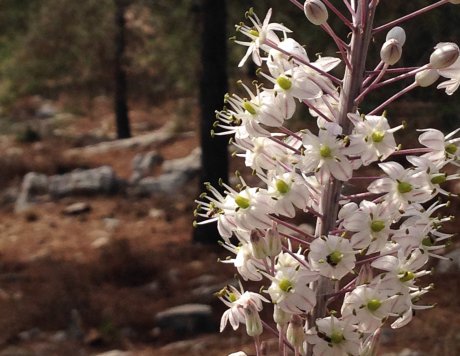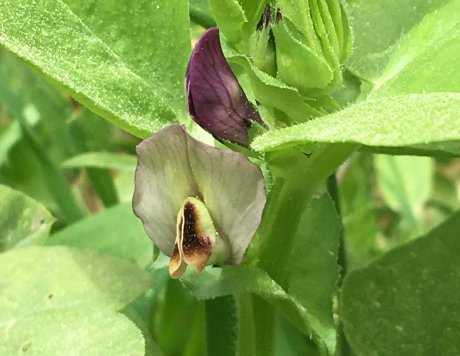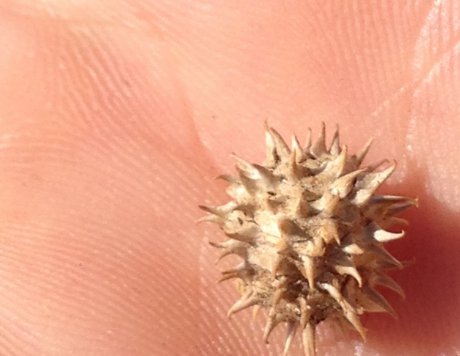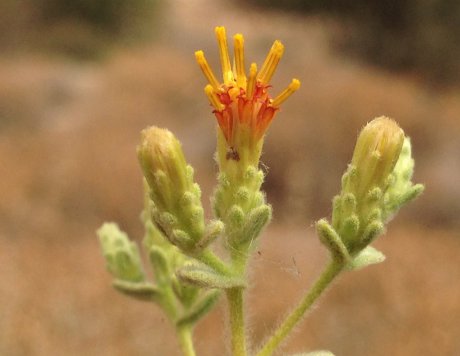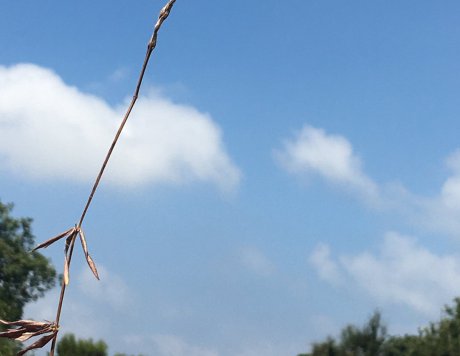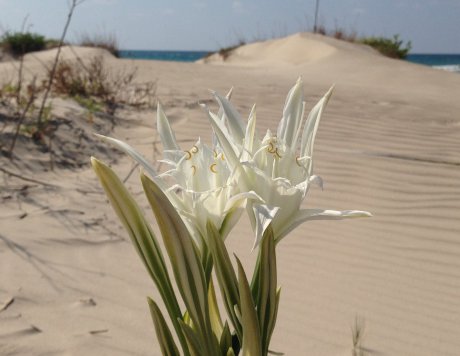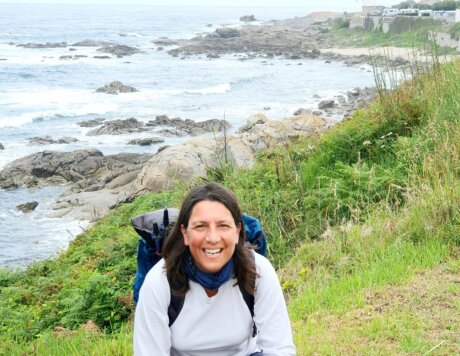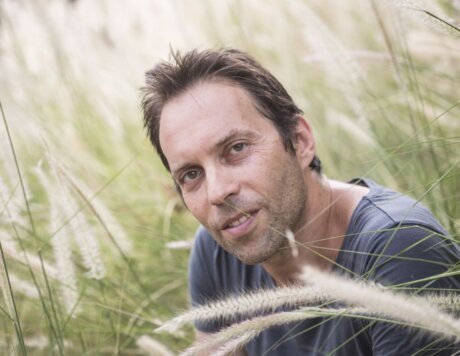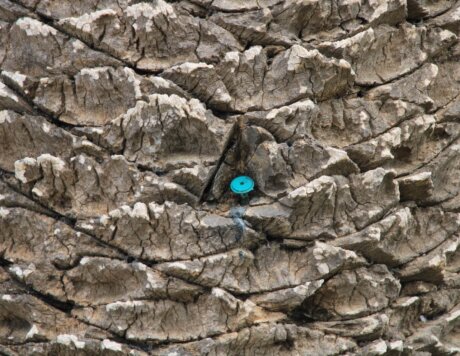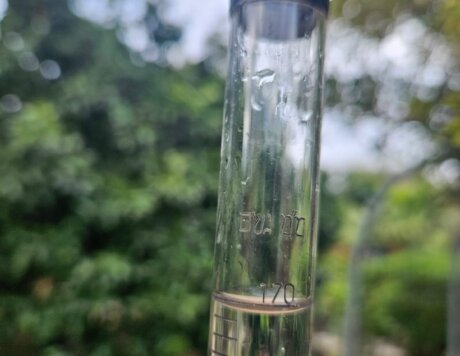During the summer, when everything is dry and not very attractive, some people wander around looking at the ground; they search and they find! Four species of rare plants were discovered by the botanist, Bar Shemesh, from Binyamina, while wandering around Ramat Hanadiv; they were added to our very respectable species list, which includes a quarter of all plant species in Israel.
Bar, how did it happen?
‘I was walking with my son in the woodland around the vulture trail and I saw a plant that I had never seen at Ramat Hanadiv – Teucrium lamiifolium. This plant is considered rare; it usually grows in more humid woodlands, mainly in the Upper Galilee and the northern Carmel. Its flowering peaked in May–June. Right next to it I saw another humid woodland plant, Crucianella latifolia, which I identified by its dry inflorescences. In the spring I saw, in the same area, Vicia galilaea – an endemic (exclusive) species to Israel and its neighbouring countries as far as Turkey, very similar to the broad bean, which is also considered rare.
‘During another hike next to Ein Zur, in a rocky and drier area, I found Medicago constricta – a small spiny plant that grows mainly in the Galilee and on the kurkar (sandstone) hills of the coastal plain. This species is considered very rare and is in danger of extinction.’
Wow, and what did you do with all those discoveries?
‘I took photos and sent them to the research division of Ramat Hanadiv; indeed, they had not seen the Vicia or the Medicago here before. The Teucrium and the Crucianella had been seen in the past, but had not been recorded in recent years.’


